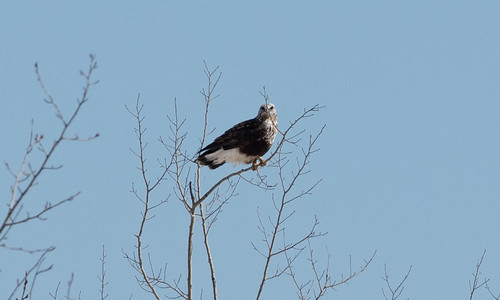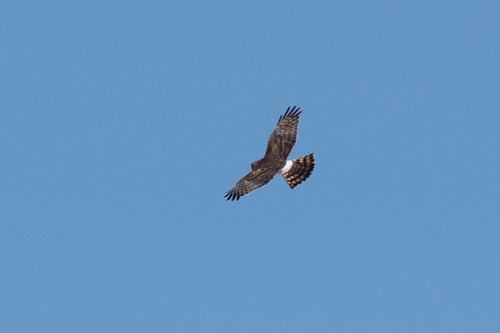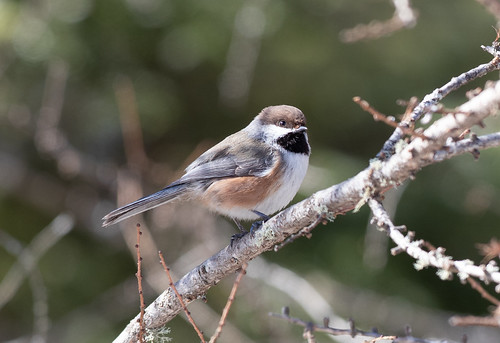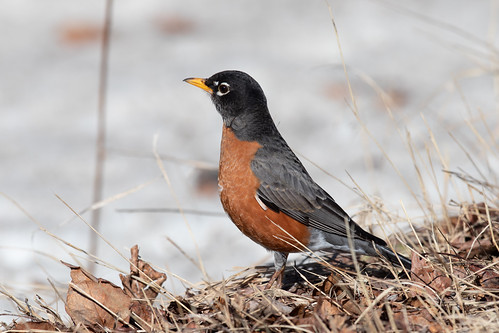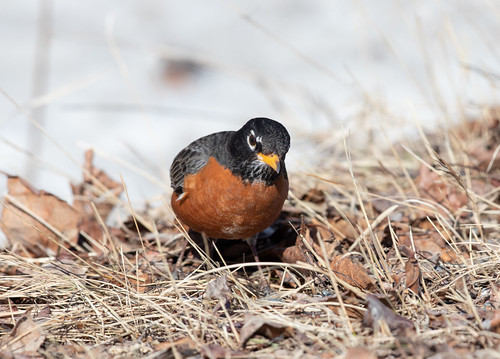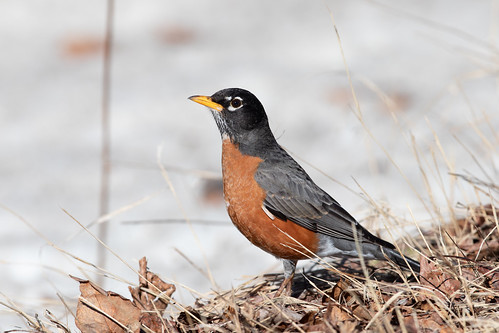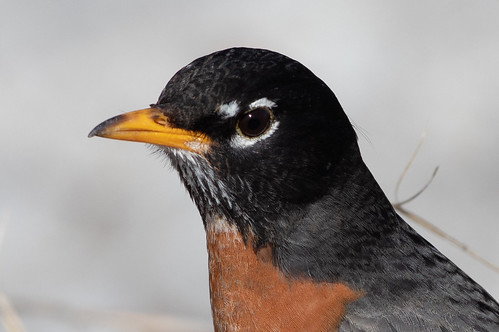The winter of 2018–19 has been hard but hardly unique. I remember winters in the 1980s when snow lasted well into April and even May. When Russ and I went to Nevada and Arizona near the end of March 1982, at the end of our first winter here, we hired a neighborhood boy to keep my feeders going for the hundred or so redpolls in my yard right then. I told him he could stop when the snow or the redpolls were gone. But he’d kept it up the whole three weeks; when we got home on April 19, the snow was deeper than when we’d left and the redpolls more plentiful. I went to the Sax-Zim Bog yesterday and even though there’s still a lot of snow on the ground, the redpolls are almost gone and there are patches along the edges of the roads where the snow has disappeared.
I was hoping to see owls and the last winter birds. No owls for me yesterday—Bald Eagle, Northern Harrier, and Rough-legged and Red-tailed Hawks were the order of the day. Unbroken sun and temperatures reaching 50 degrees provided ideal conditions for them to circle on thermals. Once hawks clear Lake Superior, they scatter, so I didn’t see anything like the numbers Frank Nicoletti, John Richardson, and others have been counting in Duluth on West Skyline Road since March 1. (You can keep up with their counts at hawkridge.org.) On March 21, they counted 1,076 Bald Eagles—a record for a single day—as well as 38 Golden Eagles. As of the 23rd, they’ve counted a total of 3,847 raptors this month, over 3,500 of them Bald Eagles.
In summer, we start seeing eagles heading south in August at Hawk Ridge, and they appear throughout the season, well into December. Our biggest fall days are toward the end of the season, when birds from the north head south as ice forms. But single-day eagle migration in fall is not as big as in spring—hormones pressing birds northward to nesting territories and mates are way more powerful and urgent than weather conditions suggesting that they head south. On good flying days as March turns into April, migrating eagle numbers will dwindle as Red-tailed Hawk numbers rise. On Saturday, in Herbster, Wisconsin, Ryan Brady counted 267 Bald Eagles, almost as many as the 340 Frank counted that day in Duluth. And Ryan’s 23 Golden Eagles topped the 17 in Duluth that day. Clearly, this is a great time for all of us in the Northland to focus our eyes skyward, at least part of the time.
My own eyes were focused downward most of the time when I was in the bog Saturday. I caught a smattering of redpolls at a couple of feeding stations. They were my only winter finches all day, but I saw 7 or 8 magpies, which made my heart swell. The bog and Floodwood are the farthest east these splendid corvids nest.
I got short but fairly decent sound recordings of Boreal and Black-capped Chickadees calling, which I posted on my website. (Boreal Chickadee and Black-capped Chickadee.) I wanted to get sounds of the last redpolls, but my only chances for recordings were at feeding stations where people were talking.
My happiest sighting of the day was on Stickney Road in late morning, when I saw a male robin rummaging in the exposed leaf litter in a narrow strip between the road and the snow. I spotted it just as I was passing by, and backed up a bit to stop directly across from it.
Robins are seldom cooperative photo subjects, but this bird stayed put, remaining as I opened the window and stuck my 300-mm lens out. The full frame shots I got were among the very best robin photos I’ve ever taken.
I usually see my first robin of spring in Wisconsin, West Duluth, or my neighborhood, and sure enough, on Sunday, a cold, cloudy, blustery day, I heard a robin muttering curse words in my yard while staying out of sight. But my very first robin of 2019, seen far north of where I usually see my first, was by far the most cooperative robin I’ve ever seen. There’s still lots of snow on the ground up here, but I’m suddenly feeling optimistic that spring may eventually arrive.
